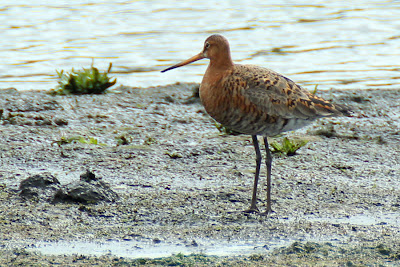In this case the aluminium seemed a very high quality being crumpled, but still not broken, yet corroded up. It gave the impression of being aircraft spec alloy. The Halifax which crashed at Decoy farm ½ a mile away is well known (see here).
However a quick search on the net revealed details of Bristol Blenheim Mk1 night trainer K7091, piloted by 25 year old Flight Sergeant Angus McBean. The aircraft was with 2 Operational Training Unit (Coastal) based a few miles from Tophill at Catfoss aerodrome. Apparently the aircraft is said to have lost sight of the aerodrome lighting and hit the ground next to the river Hull at Hempholme, not far from Standingholme Farm at 1.15am on the 6th of May 1942. For those in the know this is either in our field at Tophill or the JSR’s field next door (property of the short-eared owls this winter) and in this 1946 aerial photo:
To try and learn more we queried the RAF, RAF museum and local press and records offices which turned up no further information except confirmation. The Ministry of Defence Air Historical Branch replied;
"Our records confirm that Sgt A McBean was the pilot of Blenheim K7091 when it crashed at about 0115 hours on the 6 May 1942. Sgt McBean was based at No.2 (Coastal) Operational Training Unit at RAF Catfoss and was carrying out training in night time local circuits and landings when the accident occurred...The crash site is recorded as Standingholme Farm, Watton Farm (Undoubtedly a confusion with Watton Carrs - the term for all the lowland from Tophill back to the A164 at Watton Village), E Yorks. Map reference 505693. World War 2 maps differ from modern Ordnance Survey map references; the Imperial War Museum holds World War 2 era military maps. There are no further details on the crash site in our records or any photographs of the crash site...Finally, it is possible that some mention of the accident is made in the Operational Records Books (ORBs) of No.2 (Coastal) Operational Training Unit...The ORBs of RAF units from this period are no longer held by the Ministry of Defence but have been deposited, in accordance with the Public Records Act, at The National Archives at Kew in London."
Unfortunately we at the reserve can find no reference in the catalogue to ORB's for this date range. We then invited East Yorkshire Metal Detectorist Society to make a visit and see if we could find any further debris. The aircraft was reportedly recovered but we may expect some more shrapnel. The team undertook a good search but found nothing definitive - thanks to Chris Hannard for these pictures:
As such we’ll be having a small naming ceremony that day at 3pm to which all are invited. Through the afternoon we will be offering drinks and refreshments at the hide, with chance to go on a series of guided walks with myself and botanist Alan Marshall looking at the developing plant communities.
Entry will be free for the day and on this occasion only there will be vehicle access to the top of the reservoir. Of interest too will be a live search and display by East Yorkshire Metal Detectorist Society by kind permission of JSR Farms to see if we can find any more information.
It seems quite fitting that where one airman met his end we have hopefully created a habitat that will support avian aviators for many years to come.





























































